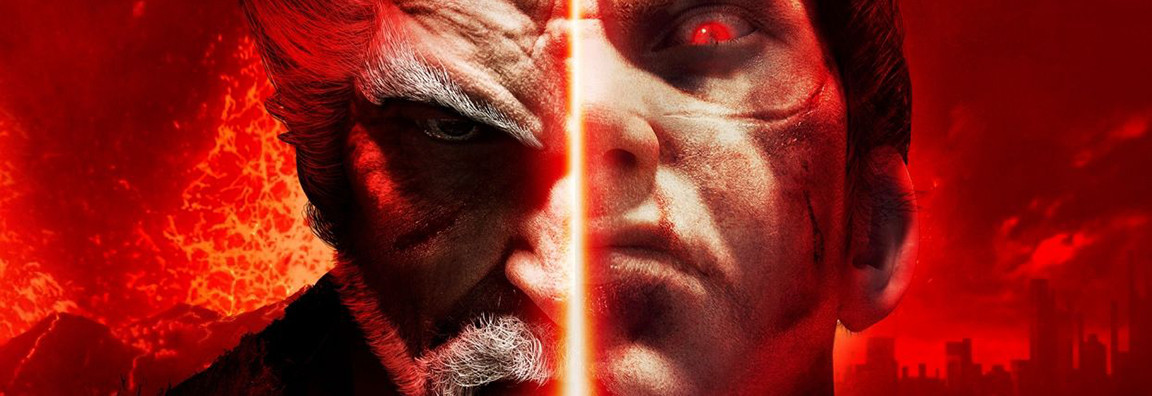Tekken 7 is one of the four main games at Evo 2021 Online, marking its sixth appearance at the world’s most storied fighting game championship. The critically acclaimed 3D fighter continues to grow in popularity six years after release and surpassed most competitive titles based on sales. While the Tekken 7 Evo 2021 Online tournament will be held on PC, PlayStation users can still compete in the FGC Arcade: Evo Edition, Evo 2021 Online Warm-up Rounds, and the Open Series.
Let’s learn the Tekken 7 basics before diving into more advanced mechanics. Competitions are recommended for beginners after you’re comfortable with combos and inputs. Otherwise, it’s hard to improve in tournaments if you don’t fully understand how to play.
- General Overview
- Movement and Defense
- Offense and Combos
- Frame Data and Punishes
- Stages
- Rage
What is Tekken?
Tekken is a Japanese fighting game franchise developed by Bandai Namco. The original released in 1994 and was the second fighting game to use a 3D plane after Virtua Fighter. It’s no coincidence that the director of the first two Tekken games, Seiichi Ishii, was a designer for Virtua Fighter.
The notorious Katsuhiro Harada voiced the characters Marshall Law and Yoshimitsu before directing every entry since Tekken 3. Under Harada, the series sold over 50 million copies. It is currently the third best-selling fighting game series of all time. Tekken’s popularity even landed franchise icon Kazuya a DLC spot in Super Smash Bros. Ultimate (the best-selling fighting game of all time).
The series’ primary plot centers around Heihachi Mishima, his son Kazuya Mishima, and the curse of the Devil Gene. Later, Kazuya’s son Jin Kazama becomes an integral part of the conflict and face of the franchise. Tekken actually translates to “Iron Fist” in Japanese. Hosted by the dysfunctional Mishima family, the King of the Iron Fist Tournament attracts fighters from around the world. Many enter the tournament to infiltrate or gain control of the Mishima Zaibatsu, while others have their own motives.
Tekken is known for its diverse cast of characters. Most use fighting styles heavily influenced by real-world martial arts. However, the franchise isn’t afraid to embrace the absurd. Where else can you see a panda fight a luchador in a jaguar mask?
Basic controls
Tekken features a unique and innovative control system. Using a four-button layout, each input controls a character’s specific limb. In Tekken terminology, these commands are designated with numbers similar to boxing: 1 for left punch, 2 for right punch, 3 for left kick, and 4 for right kick. Two buttons can be pressed at once for throws and additional moves. These commands are known as 1+2, 3+4, 1+3, 2+4, etc. On a traditional 8-button arcade stick or DualShock controller, you can customize your controls so that a single button triggers dual-button inputs.
There are multiple moves for each command. Similar to SoulCalibur VI, pressing a button while moving the pad or stick in one of eight directions results in distinct moves. This robust control scheme makes Tekken move lists infamously extensive. It can be intimidating for new players, but every attack has a purpose. These range from quick pokes, standard launchers, and counter hit launchers, to mixup strings, tech traps. There are even moves designed solely for combos that serve little to no use in neutral.
Movement in Tekken is similar to most fighting games. You can move left and right, dash, and backdash. Since Tekken is played on a 3D plane, sidestepping replaces jumping as vertical movement. To sidestep, tap up or down on a pad or flick a fight stick in either direction. You can still jump by holding up or duck by holding down.
There is no block button in Tekken 7.
- Hold back on the controller or don’t press anything to automatically block high and mid attacks.
- Hold down to block low attacks.
What makes Tekken unique?
Tekken and Tekken 2 were very bare bones fighting games. There were no special moves, meter system, and only one character had a projectile. This gave Tekken an enhanced focus on up-close, hand-to-hand combat. Although the games were technically 3D fighters, Kazuya was the only character who could sidestep.
Stages were also infinite with no edges or corners. Most fighting games used one-frame links to extend combos, while Tekken used in-air juggles. Players were free to discover their own combos and style on opponents unfamiliar with the matchup.
The evolution of Tekken gameplay mechanics
More mechanics were added throughout the series.
- Tekken 3 introduced sidesteps for all characters and quicker recoveries on knockdowns.
- The spinoff Tekken Tag Tournament implemented a team battle system that featured every character in the series to that point.
- Tekken 4’s now standard stage walls influenced the entire meta.
- Tekken 5 streamlined this idea with more symmetrical wall stages. It also removed uneven terrain.
- Tekken 6 introduced the Bound system to make combos simpler, which evolved into Tekken 7’s Screw System.
How does the Rage System work?
Tekken 6 also introduced Rage to the series. Rage gives players a damage boost after their health drops to a certain level. The system was implemented to create more comeback potential and make matches more intense to watch.
Tekken 7 expanded on Rage with character-specific Rage Arts and Rage Drives.
- Rage Arts are high damage, cinematic cutscenes similar to super moves.
- Rage Drives are enhanced versions of preexisting moves.
- Players will lose the damage buff for the rest of the round after using a Rage Art or Rage Drive.
This series of guides will continue with detailed explanations of specific Tekken 7 gameplay aspects such as movement, combos, and the Rage system. Once you learn all of the basics you will be ready to test your skills!
